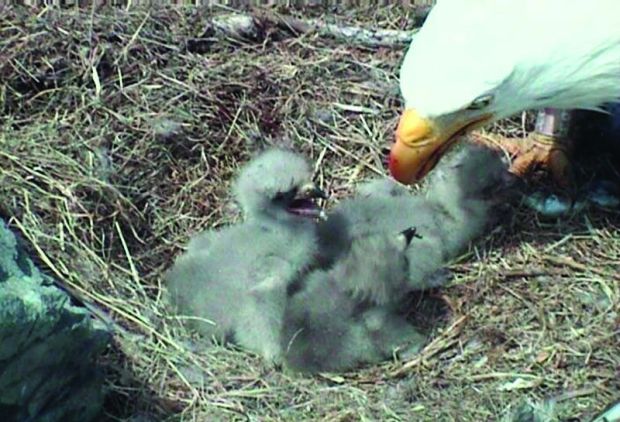
Eagles are our national symbol, sacred to multiple Native American tribes and a potent symbol of freedom – and they nearly went extinct in the United States. In fact, they were locally extinct in Southern California for many decades.
Over-hunting, loss of prey and above all, a horrendous amount of the toxic chemicals DDT and PCB made their way into the fish population in Santa Monica Bay, resulting in the extinction of the local eagle population.
Now a new film, “Return Flight,” captures the more than 20-year effort to return bald eagles to the Santa Monica Mountains and Greater Los Angeles. The film screens Friday, July 19, the Santa Monica Mountains Wild and Scenic Film Festival at Malibu City Hall, where two who were involved in bringing the eagles back to the Channel Islands—Kate Faulkner of the National Parks Service and Annie Little of the U.S. Fish and Wildlife Service—will be on hand to answer questions about the film following the screening.
Between 1947 and 1971, pesticide manufacturer Montrose Chemical Corporation in Torrance discharged its untreated DDT waste into the Los Angeles County sewer system, an estimated 1,700 tons of which ended up in Santa Monica Bay. The sewers empty two miles offshore in an area called the Palos Verdes Shelf, where a 17-square-mile deposit of DDT settled at the bottom of the sea floor.
The government banned the manufacture of DDT in 1972, but the damage was done. When birds eat fish that have high concentrations of DDT, the eggshells are fragile and crack before the bird embryos come to maturity, obliterating the next generation. In combination with PCBs, the catastrophic quantities of DDT contamination below Palos Verdes left the scientific community with a huge long-term problem that felt insoluble, permanent and heart-breaking. What can you do?
The turnaround begins in the eighties with a young biologist, David K. Garcelon, who decided to do his graduate work by starting a Bald Eagle restoration project in the Channel Islands. Footage of this era makes for a compelling watch: Garcelon figured there had been enough time for the contaminants to get diluted and absorbed by the larger environment to start afresh with eagles imported from other parts of the United States. He was wrong.
When Garcelon and his partners found the broken eggs, he joined forces with an array of biologists from different agencies, obtained funding from the Montrose Settlements Restoration Program, and developed a program to take the eggs out of the nests, put dummy eggs in their place, raise the fragile eggs in laboratory conditions, hand-feed the newly hatched chicks by humans posing as eagle parents and then return the hatchlings to their parent nests. And the parent eagles took them back in.
Biologist Peter Sharpe owns the movie because he is the guy brave enough to return the chicks to the nests, coming in dangling from a rope from a helicopter.
Watching the human-raised eagle babies thrive on Catalina, the team of biologists decided to try to bring eagles into the Channel Islands furthest away from the spill in Palos Verdes—making Santa Cruz the hero location.
Faulkner, of NPS, was the liaison that made this new round of restoration possible. Little, at FWS, was the program manager who helped implement it. Faulkner had NPS install “eagle cams” that provided real-time footage of the nests of these birds coming back to Channel Islands. So when good things happen, we get to see it every step—and ultimately every flap—of the way.
Director White is able to take a story 20 years in the making and turn it into a narrative sure to inspire the next generation of biologists to take on epic projects of their own – he shows Garcelon’s transition from dreamy young man into patriarch of a successful program, the hopelessness of dead eggs to the vibrancy of a nest full of eagle chicks. And above all, he shows eagles in flight, making for a film that soars.
By tracking the adult eagles, the viewer finds that the newly returned birds go as far away as Yellowstone National Park, then come back to frequent what the film calls “the Malibu Riviera.” What does this mean? That when I thought I was hallucinating about six years ago because I saw a Bald Eagle in Las Virgenes Canyon, I did. Come see who made it happen for all of us.
Melina Sempill Watts is the Malibu Creek Watershed Coordinator for the Resource Conservation District of the Santa Monica Mountains.
Tickets for the Santa Monica Mountains Wild and Scenic Film Festival cost $15. They are on sale at www.rcdsmm.org.